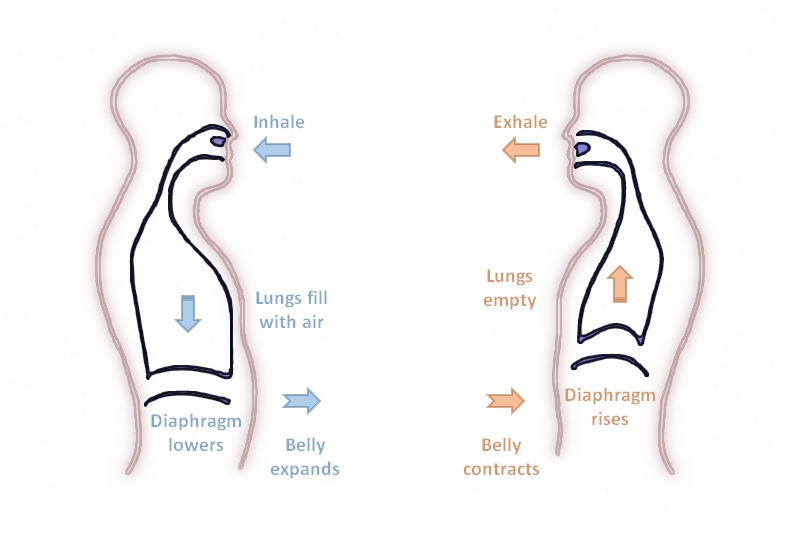Table of Contents
Chronic obstructive pulmonary disease (COPD) is a condition characterized by shortness of breath, wheezing, chronic cough, lung damage, and excess mucus production. The two primary forms of COPD include chronic bronchitis and emphysema. Smoking is one of the leading causes of COPD in the US.
In COPD, breathing becomes difficult as excess mucus collects in the lungs and throat. Because COPD is a progressive disease, symptoms worsen over time. Breathing exercises can help alleviate symptoms and make breathing feel a little bit easier. Breathing exercises are a helpful tool to improve lung capacity, clear airways and provide a calming effect on the brain.
Continue reading for four breathing exercises that can be useful for someone with COPD. As you go through each of these breathing exercises on your own time, there are a few things to consider first.
Here is a list of things to do before you begin a breathing exercise:
- Choose a location where you feel comfortable doing these exercises. You can do these exercises anywhere. You can find a place in quiet and solitude, in transit on the bus or train, or during a challenging conversation with a loved one.
- Clear the space of any distractions.
- Find a comfortable seat either on a yoga block with crossed legs, seated on pillows, or in a chair where the feet can be grounded flat on the floor.
- Keep a glass of water close by if the need to clear your throat arises.
Belly breathing is a great exercise to learn as a foundation for other, more intricate breathing exercises. Belly breathing is also known as diaphragmatic breath because it is done by contracting the diaphragm, a muscle that is crucial for breathing. The diaphragm is a parachute-shaped muscle that sits below the heart and lungs, separates the abdomen from the chest, and helps with breathing. As you breathe in (inhale) the diaphragm contracts and moves downward, increasing the space in the chest cavity as the lungs expand. As you breathe out (exhale), the diaphragm muscle relaxes, reducing the space in the chest cavity as the lungs deflate. [1] Belly breathing is easy to do and can provide a relaxing effect. In this exercise, the focus is on the belly. The chest remains still, as breath is directed into and around the section of your abdomen. To practice Belly Breathing, follow the steps below: Square breathing is a helpful exercise to help reduce stress, calm the nervous system, and shift your energy. Other terms for square breathing are called 4-part breath or box breathing. Follow the steps below to practice square breathing: As you practice this exercise, you can keep track by repeating words and numbers in time with each breath. Silently say to yourself: inhale, 2, 3, 4, hold, 2, 3, 4, exhale, 2, 3, 4, hold, 2, 3, 4. This breathing technique can be quite relaxing and is a slight variation of the above square breathing technique. This breathing technique can be helpful to relax the nervous system, the result of an exhale that is longer than an inhale. Follow the steps below to practice 4-7-8 Count Breath: Huffing, also known as Huff Coughing, is a breathing technique that involves deep breaths combined with coughing. Coughing helps to move mucus out of the airways. In COPD, often in the case of chronic bronchitis, a large amount of mucus is produced, which can narrow the airways and make it harder to breathe. Huffing is a technique that can help move mucus out of the lungs. According to the Cystic Fibrosis Foundation, huffing should be done in combination with other airway clearance techniques (ACTs). Huffing involves taking a full inhale, retaining the breath, and actively exhaling. As you breathe in and retain the breath in the lungs, this pause allows the air to separate mucus from the lung walls so it can be coughed up. Huffing can be less tiring and work efficiently, as it’s not as forceful as a cough. With your forceful exhales, you can imagine yourself fogging up a mirror. Follow the steps below to practice Huff Coughing: After the above steps have been repeated, follow with one strong cough. Coughing, at this point, can help to clear mucus from the larger airways in the lungs. Below is a helpful and clear video that explains how to perform Huff Coughing step-by-step. Always consult a doctor for COPD treatment, tools that can help you manage the condition, and any questions or concerns you may have. Be mindful as you go through these exercises. Most often, breathing exercises are harmless and can be effective at calming the nervous system, but sometimes they can cause a feeling of being lightheaded or dizzy. Breathing exercises should not be considered treatment, but only something you may add to your daily treatment routine. Awareness of breath can help to reduce stress and anxiety and ease symptoms of COPD. The content in this article is intended for informational purposes only. This website does not provide medical advice. In all circumstances, you should always seek the advice of your physician and/or other qualified health professionals(s) for drug, medical condition, or treatment advice. The content provided on this website is not a substitute for professional medical advice, diagnosis or treatment.
Belly Breathing (Diaphragmatic Breath)

Square Breathing

4-7-8 Count Breath
Huff Coughing
